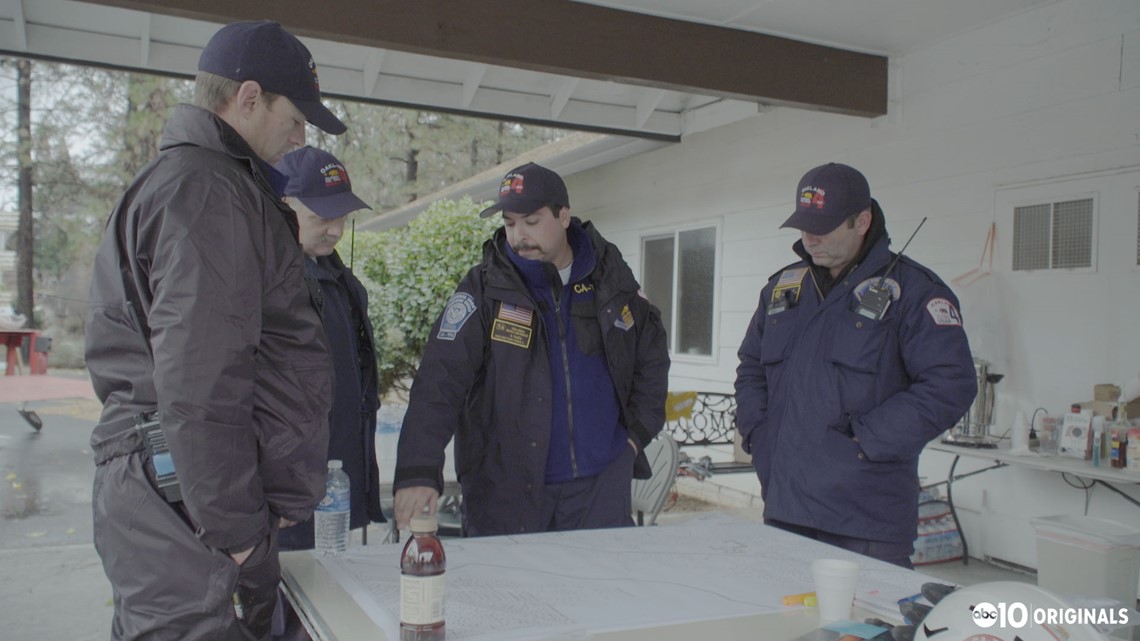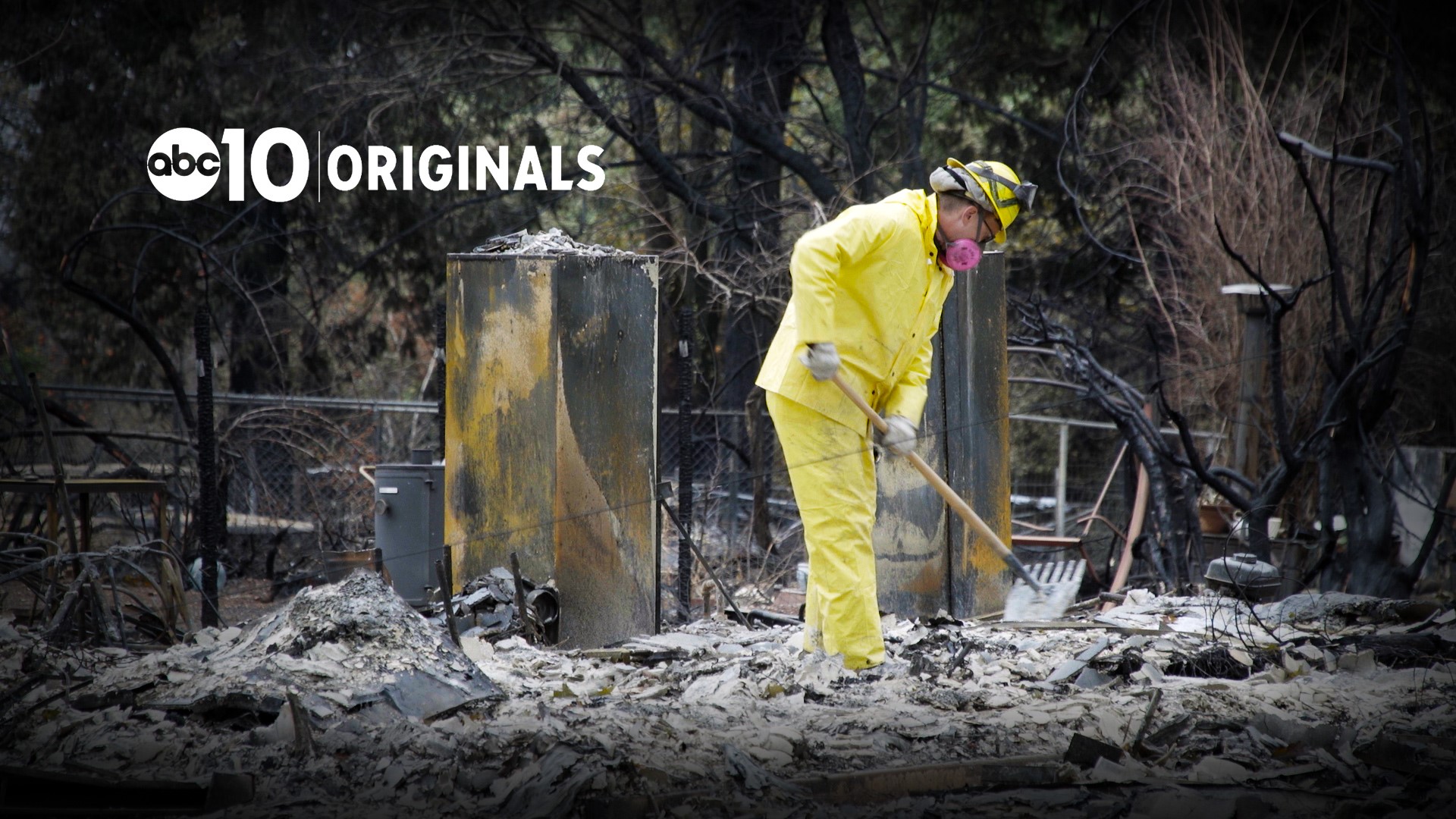OROVILLE, Calif. — From the beginning, Butte County Sheriff Kory Honea knew that he was dealing with an extraordinarily dangerous situation.
As the flames of the Camp Fire tore through Paradise, he was focused on the chaos, he said, but in the back of his mind, there was the very serious concern that lives would be lost.
On Nov. 8, 2018, the Camp Fire, which has become California’s deadliest and most destructive wildfire to date, killed 85 people. Their names and their stories are still being told and the memories of them will live on in those who remember.
But this is a different story, one that details what it took to gather what remained of the victims and bring their families closure.
"I have come to believe that this is one of the most complex mass casualty incidents that any public safety official has had to deal with," Honea said.
Honea was responsible for leading the search effort for the missing and the dead.


"I think that our situation was distinguishable in that, for example, an airplane crash: you have a passenger list, so you know who was on that plane and you have a starting point in terms of who you're looking for," Honea said. "We didn't have that."
In the hours after the fire passed through Paradise, Honea tapped Lt. Stephen Collins, who was then leading the detectives unit, to head up the coroner's unit overseeing the search for the dead.
Collins gathered who he could--the already small department was spread pretty thin--and sent them East of Paradise, where the fire had already passed through. That’s where people like Jennifer Celentano, an investigative assistant at the Butte County Sheriff’s Office, would start their search.
"My sergeant told me that there were four burned-out cars with five victims inside," Celentano said. "I was under the impression that I was going to be picking up five full bodies, and when I got there, I found that the fire burned so hot and so fast that what I was picking up were tiny bits of bone and ash."
Honea had already set the precedent that every structure, every acre of land would be searched, but Collins’ small teams were moving too slow. They needed help.
"I knew what I had to do," Collins said. "I came in and I said we're going to bring in the anthropologists and search and rescue. I want every search and rescue team I can get."
Local, state, and national search and rescue teams responded, and volunteers filled in the gaps. Collins got what he wanted and more.


"We utilized the search and rescue and the urban search and rescue for going through and clearing properties, making them safe, and searching and finding remains," Collins said. "We would then send the coroner investigators and anthropologists. Once they did find remains and figured out whether they're human or not, if they're human, they'd go ahead and do the recovery."
Everything was broken into areas and then searched, house by house, building by building, acre by acre until it was clear.
"It was just one assignment after the next," Celentano said. "As soon as you dropped off you went back and just continued for days and days and days."
Meanwhile, Sheriff Honea was trying to figure out what to do with the remains the teams were finding. Butte County doesn’t have a central morgue, and they needed somewhere to house them to begin to figure out who they were.
"We immediately called upon Sacramento County and asked if they would be the location where we would send the remains and then be able to utilize their facility to help us again determine the cause and manner and identity," Honea said.
Up until the Camp Fire, the largest mass fatality incident Sacramento County Coroner Kim Gin handled was five victims.
By late November 2018, she was handling 84 victims.
"The number is not really of consequence," Gin said. "It's how we take care of each person that comes through here."
Gin was expecting the call from Sheriff Honea. She’d helped Butte County in the past with death investigations, and when she saw what the Camp Fire had done in Magalia, Paradise, and Concow, she knew they’d probably need her team’s assistance.
"We just took over the identification and examination portion... the scientific portion," Gin said. "The biggest challenge with death investigation is that your best witness is not alive. With fire victims, very few can actually be identified by fingerprints. We only had five that we identified by fingerprints."
Enter ANDE, a Boston-area biotechnology company that saw what Butte County was dealing with and reached out to help, offering their Rapid DNA machine to run DNA samples in hopes of quickly identifying the collected human remains.
"All of a sudden we just started getting all these identifications," Celentano said. "I'd never seen anything like that. When we send DNA (Department of Justice), it typically takes us six months to a year to get anything back. And these guys are producing things in a month. You know we had 24 people identified by DNA in one month."
While some of the Camp Fire victims were able to be identified by dental records, and in some cases, even histology slides provided by the California Department of Justice, most identities were determined by Rapid DNA. Without it, Gin says families would still be waiting for answers.
"I don't think that we can go back to using regular DNA processes," Gin said. "I think we need to move forward and make sure that rapid DNA is ingrained into whatever training we have and we have that ability to use it. And we owe it to whatever victims in the future to make sure we don't go backward to go forward."
It’s been nearly a year since the Camp Fire tore through Butte County, and almost all of the victim’s families have been notified of the recovery of their loved ones remains. All except one.
No one has come forward claiming they lost a friend or family member who hasn’t already been identified, and the DNA profiles officials were able to get from the unidentified remains didn’t match any of the ones they had on file.
"Genealogy DNA is actually going to play a pretty big part in this final identification," Gin said.
For the first time, Sacramento and Butte County officials are turning to genealogical databases to identify victims of a mass casualty incident. They hope to find a familial match to someone who may not have known one of their family members was killed in the fire, but recognize the privacy concerns people have after the databases have been used to identify criminal suspects like the Golden State Killer.
"My hope is that the administrators of these databases would draw a distinction between what we're trying to do, which is to identify the next of kin of people who you know tragically perished in a fire, versus utilizing it to identify criminal suspects," Honea said.
"I think that's worthy of a distinction and certainly would be the right thing to do in terms of bringing closure to the family members."
To join the conversation, follow Michael Anthony Adams on Facebook.

